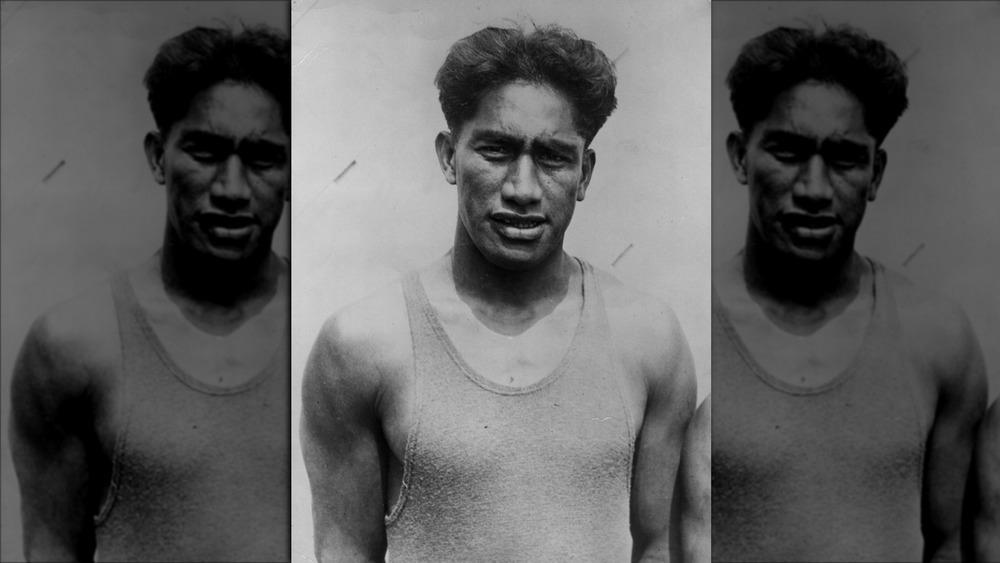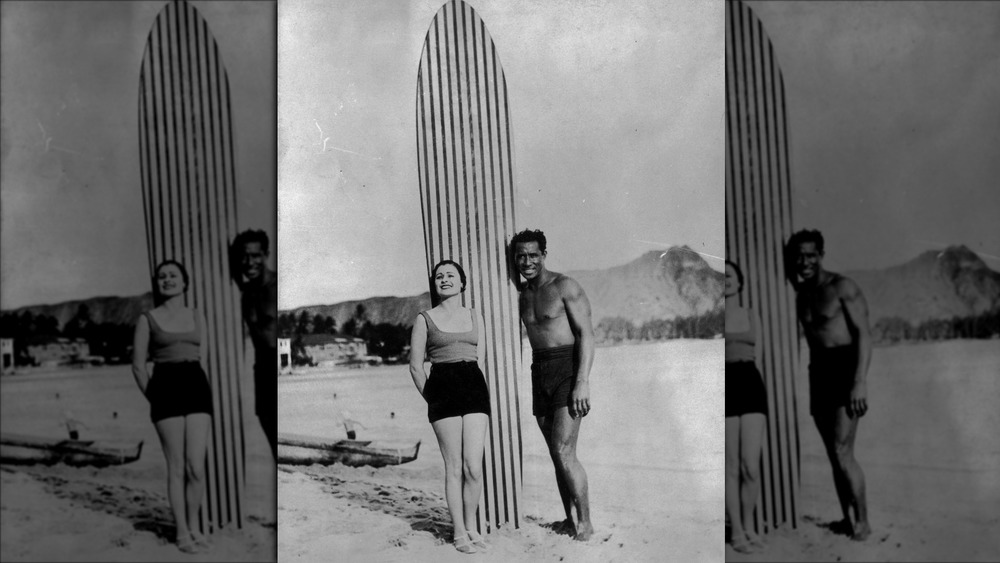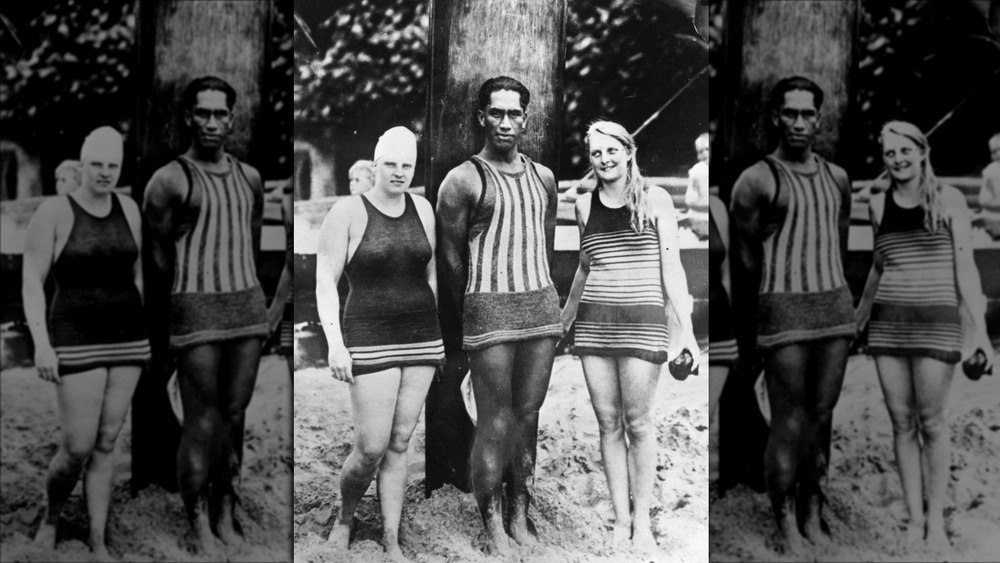The Time Surfer Duke Kahanamoku Rescued People From A Sinking Ship
Legendary surfer Duke Kahanamoku basically lived in and on the water. Surfer Today remembered the Hawaiian native as "the father of modern surfing." While surfing had been suppressed by foreign missionaries almost to the point of extinction by the end of the 19th century, Kahanamoku was part of a small group of local wave riders who kept the sport alive. In addition to popularizing surfing across the globe, he was also a world-class swimmer. He would go on to be the first person to be honored as a Hall of Famer in both surfing and swimming. He traveled to Australia, New Zealand, California, and elsewhere performing in surfing exhibitions on a wooden surf board he made himself.
According to the U.S. Olympic & Paralympic Museum, he developed the flutter kick, a new style of swimming that replaced the scissors kick as the predominant swimming technique the world over. Nicknamed "The Duke" and "The Big Kahuna," Kahanamoku broke the 100-yard freestyle world record in his very first competition, and he went on to win three Olympic gold medals. After becoming a world champion, he moved to Hollywood for a time and worked as an actor. It was during his time in California — June 1925 — that his skills would end up serving a purpose more vital than sport when he saved the lives of eight people who were caught on a sinking ship.
Duke Kahanamoku's lazy weekend turned into life-or-death situation
On June 14, 1925, Kahanamoku crawled out of the tent he'd pitched on Newport Beach to enjoy what was meant to be "a lazy weekend," according to The Olympians. But instead of an invigorating morning swim, The Duke would find an emergency situation brewing on the waves. A yacht named Thema, whose captain had missed the checkered warning flag, was having trouble in the tempestuous waters of the Pacific. A sudden squall kicked the waves up to 20 feet high, and the boat was listing dangerously at a 45-degree angle atop the swells. Kahanamoku saw the glass of the windows breaking and men and rigging flying overboard. He knew he had to act. So he grabbed his longboard and hit the waves.
Kahanamoku paddled out to the floundering craft and pulled three struggling fisherman onto his board. His actions had inspired his surfing buddies to join in on the rescue, and his friends Jerry Vultee and Owen Hale met him out in the water to ferry the men back to shore. Kahanamoku turned back toward the sinking ship. He snagged two more and returned them to safety, then headed out for a third trip. Bystanders on shore helped out, resuscitating the unconscious fishermen. By the end of the ordeal, the surfers saved 12 of the 17 fishermen aboard the Thelma. Kahanamoku rescued eight of them himself.
Duke Kahanamoku describes the rescue to the press
According to the L.A. Times, scuttled seafaring vessels were a not uncommon occurrence in that part of California at the time. Five fishermen had drowned a year earlier when their 30-foot boat capsized in a storm off the Corona del Mar beach. Just three weeks before The Duke's heroic actions, a teenager drowned after a rowboat he was in with two friends overturned in turbulent waters. When Kahanamoku saw the Thelma struggling, he knew he had to take action.
"Only a porpoise or a sea lion had the right to be out there," he told reporters after the rescue. "From the shore we saw the Thelma wallowing in the water just seaward of where the breakers were falling. You could see her rails crowded with fishermen. She appeared to be trying to fight her way toward safe water ... but it obviously was a losing battle." The scene he described sounded truly harrowing, and the men aboard the Thelma were lucky such a world-class swimmer/surfer was around to help them out.
But Kahanamoku, of course, didn't have his reputation in mind as he paddled out to save the men. "Neither I or my pals were thinking heroics," he told a newspaper in Honolulu later. "We were simply running ... me with my board and the others to get their boards ... and hoping to save lives."


